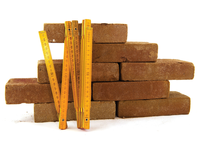Building Blocks
Putting together realistic models on a computer screen can be useful and fun. LeoCAD

Ivonne Wierink, 123RF.com
Putting together realistic models on a computer screen can be useful and fun. LeoCAD
Older generations may still remember playing with wooden blocks or using sand to build castles and roads. Others may have played with model train sets. But, building things came into its own with Lego. Lego pieces are made from colorful plastic and fit together with a grid system of knobs and holes.
Lego has been around since 1947 and is manufactured by the Danish toy company Lego Group [2]. Competitors have used the idea to create a smaller market segment but their products don't always work with the original.
Originally intended for children, Lego is now used by young and old alike. Different sets have been specially designed for specific age groups. The older the target group, the smaller and more versatile the individual bricks. (See the "Legos and Electronics" box for more information.) The biggest advantage here is that you can always combine all of the bricks from one product line together. This means that you can bring your own ideas to building with Legos and develop your skill as a builder.
[...]